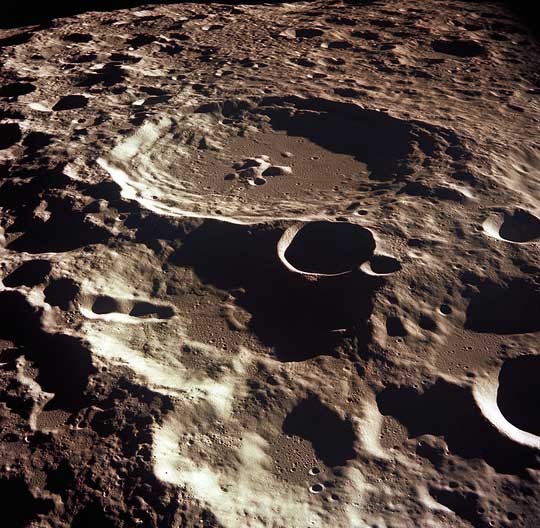Our Earth has a 'Broken Moon'
New research based on NASA data shows that our Moon possesses a completely cracked surface.
New work led by researcher Sean Wiggins, Department of Earth and Environmental Sciences at Brown University (Rhode Island), based on NASA data and simulation experiments, proved the most romantic celestial body in the sky - the Moon - has a cracked surface.

The surface is full of "scars" of the Moon - (photo: NASA).
Research shows that since the Moon formed 4.3 billion years ago, the effects of asteroids have caused its "face" to become scarred with holes and craters. Damage goes even further with many cracks stretching, deep to 20km.
The area above the Moon's crust called megaregolith suffered much of the damage from space attacks. In addition to the large cracks, the effects of meteorites, asteroids even separate the Moon's crust into pieces about 1 meter wide, opening up surface cracks lasting hundreds of kilometers in megaregoliths.
Discovered on the appropriate and further explanation for the data that GRAIL (Moon Gravity Recovery and Interior Laboratory), a NASA research program with 2 warriors is a pair of twin spacecraft GRAIL-A and GRAIL-B were sent to the Moon a few years ago, each collected.
The survey results from GRAIL showed that the moon's crust was much less dense than expected. Wiggins and colleagues suspect that the damage from the ancient effects has increased the porosity for the surface and therefore the density.
Simulation experiments show that if a 10km-diameter space stone plunges into the moon, in addition to leaving a large impact crater, we still find it full on this object, and enough to expand at least 2 sides of the crack lines 20km deep and 300km long.
Low gravity on the moon only causes more surface damage. That's why our Earth, too, has suffered so many great strikes but doesn't suffer from cracks all over the surface.
"Bringing together a more detailed picture of megaregolith will help scientists better understand how the area conducts heat; this can reveal important clues about the formation of other moons and even the other planets, " Wiggins said.
The study has just published in the Journal of Geophysical Research: Planets .
- The moon is getting smaller
- The moon is separated from Earth?
- Photo: Manually watch the biggest moon in 20 years
- Does the Moon have its own moon? And you will be surprised with its name!
- At the time of dinosaurs, volcanoes on the Moon used to work?
- What happens if the Moon falls to Earth?
- 'Super moon' is about to appear
- The Moon will collide with the Earth after 65 billion years
- Decode the phenomenon of the moon
- The Earth's Moon is a giant platinum storehouse?
- New hypothesis about the origin of the Moon
- 50 interesting facts about the moon
 Van Allen's belt and evidence that the Apollo 11 mission to the Moon was myth
Van Allen's belt and evidence that the Apollo 11 mission to the Moon was myth The levels of civilization in the universe (Kardashev scale)
The levels of civilization in the universe (Kardashev scale) Today Mars, the sun and the Earth are aligned
Today Mars, the sun and the Earth are aligned The Amazon owner announced a secret plan to build a space base for thousands of people
The Amazon owner announced a secret plan to build a space base for thousands of people